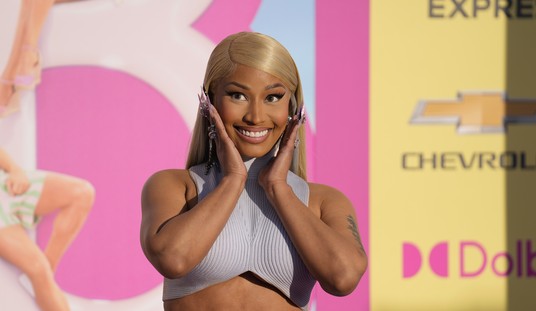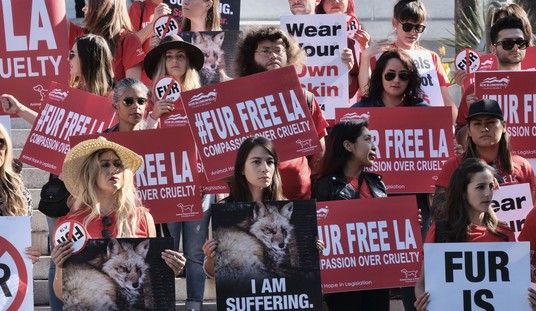“Even though the 1990s were a good economic time, something during that time soured in the culture,” Mark Judge writes at the Daily Caller. “To me the era signaled the full flowering of the culture of narcissism:”
In The Culture of Narcissism, Christopher Lasch argues that the breakdown of the family and traditional forms of authority had created a society of people with no inner core who are desperate to create an authentic personality to receive approbation from others — like Barack Obama the well-fed Hawaiian becoming a civil rights activist with street cred. While this phenomenon was active since the 1970s, when Lasch wrote his book, it really entered the popular culture with devastating force in the 1990s. Rock and roll always had dark and dangerous side to it — it’s part of what makes it great — but with the explosion of Nirvana and grunge in the early 1990s, suddenly any kind of pop music that was upbeat was suspect. The fun of old school rap was replaced by gangsta rap. Madonna’s sexual antics, which were usually pretty innocent, and even brilliant in her “Like a Prayer” video, were replaced by artless booty-shaking. For the narcissist to be authentic, she had to be vile, joyless, illiterate, and raunchy.
Which brings us to Miley Cyrus. Watching her catastrophe, I was reminded of something the great historian James Hitchcock once observed: that since the 1960s protesting has become not a way to address very real needs and problems in the country, which are dealt with in the political realm, but rather “organized and public forms of psychotherapy.” But the thing about narcissism and liberalism is that there are no limits. Al Sharpton and the grim faces on MSNBC will be angry the rest of their lives, so matter how much social progress is made, because in order to feel like virtuous people, they have created identities for themselves as truth speakers and activists. Take that away and they have nothing. All they can do is increase the volume in the hopes of filling the void within. Gangsta rap doesn’t deliver the same charge, so you have to ratchet up the outrage. It’s not enough give give a wink and shake a leg — you have to perform sexual gymnastics on stage. Ironically, by being loosed from any and all limits, these are people, as Lasch put it, who “have lost the ability to feel.” Miley’s manic acting out on stage was a desperate attempt at legitimacy and feeling. How tragic that she and her country have lost the ability to experience real joy.
Reading Judge’s essay, I’m reminded of the late Mark Kelly’s profile of the early days of a much more iconic American figure:
Sinatra, as every obit observed, was the first true modern pop idol, inspiring in the 1940s the sort of mass adulation that was to become a familiar phenomenon in the ’50s and ’60s. One man, strolling onto the set at precisely the right moment in the youth of the Entertainment Age, made himself the prototype of the age’s essential figure: the iconic celebrity. The iconic celebrity is the result of the central confusion of the age, which is that people possessed of creative or artistic gifts are somehow teachers-role models-in matters of personal conduct. The iconic celebrity is idolized-and obsessively studied and massively imitated-not merely for the creation of art but for the creation of public self, for the confection of affect and biography that the artist projects onto the national screen.
And what Frank Sinatra projected was: cool. And here is where the damage was done. Frank invented cool, and everyone followed Frank, and everything has been going to hell ever since.
In America, B.F., there was no cool. There was smart (as in the smart set), and urbane, and sophisticated, and fast and hip; but these things were not the same as cool. The pre-Frank hip guy, the model of aesthetic and moral superiority to which men aspired, is the American male of the 1930s and 1940s. He is Humphrey Bogart in The Big Sleep or Casablanca or Archie Goodwin in Rex Stout’s Nero Wolfe novels. He possesses an outward cynicism, but this is understood to be merely clothing; at his core, he is a square. He fights a lot, generally on the side of the underdog. He is willing to die for his beliefs, and his beliefs are, although he takes pains to hide it, old-fashioned. He believes in truth, justice, the American way, and love. He is on the side of the law, except when the law is crooked. He is not taken in by jingoism but he is himself a patriot; when there is a war, he goes to it. He is, after his fashion, a gentleman and, in a quite modern manner, a sexual egalitarian. He is forthright, contemptuous of dishonesty in all its forms, from posing to lying. He confronts his enemies openly and fairly, even if he might lose. He is honorable and virtuous, although he is properly suspicious of men who talk about honor and virtue. He may be world-weary, but he is not ironic.
The new cool man that Sinatra defined was a very different creature. Cool said the old values were for suckers. Cool was looking out for number one always. Cool didn’t get mad; it got even. Cool didn’t go to war: Saps went to war, and anyway, cool had no beliefs it was willing to die for. Cool never, ever, got in a fight it might lose; cool had friends who could take care of that sort of thing. Cool was a cad and boastful about it; in cool’s philosophy, the lady was always a tramp, and to be treated accordingly. Cool was not on the side of the law; cool made its own laws. Cool was not knowing but still essentially idealistic; cool was nihilistic. Cool was not virtuous; it reveled in vice. Before cool, being good was still hip; after cool, only being bad was.
Quite a legacy. On the other hand, he sure could sing.
And Miles Davis, at least before he became a victim, fashion and otherwise, of the late 1960s psychedelic revolution, sure could play. And Brando and McQueen sure could act. All of these icons of cool were extremly talented individuals who attempted to revolutionize existing forms, whether jazz or in Hollywood. (In Sinatra’s audacious case, both. Occasionally, with brilliant results.)
But Sinatra and Brando-style cool hasn’t been in vogue for decades now. (And Barack Obama unwittingly drove the final nail in its coffin, as self-professed reformed hipster Roger L. Simon wrote a couple of years ago.) In its place, as Judge writes, is nihilism, narcissism, and anger as a pose — a far more malignant pose than cool ever was.
And that’s the culture that Cyrus — and her producers, choreographers, managers, handlers, and hangers-on have spent their entire lives marinating in, without a moment for reflection. Or as Christian Toto recently wrote at Big Hollywood, “The former teen sensation was simply doing what the culture taught her to do.”
But what a poisonous culture it’s become — or unknowingly regressed into, depending upon your perspective:
[jwplayer config=”pjmedia_eddriscoll” mediaid=”66607″ width=”590″ height=”360″]










Join the conversation as a VIP Member